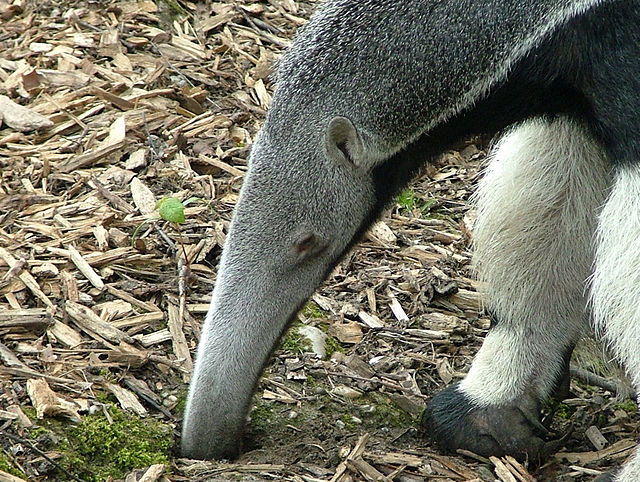The sloth bear, also known as the Indian bear, is a myrmecophagous bear species native to the Indian subcontinent. It feeds on fruits, ants and termites. It is listed as vulnerable on the IUCN Red List, mainly because of habitat loss and degradation. It is the only species in the genus Melursus.
Sloth bear
Skulls of a Sri Lankan sloth bear (left) and a common sloth bear (right) from the Muséum national d'histoire naturelle
Male Sri Lankan sloth bear
A Sri Lankan bear in a tree
Myrmecophagy is a feeding behavior defined by the consumption of termites or ants, particularly as pertaining to those animal species whose diets are largely or exclusively composed of said insect types. Literally, myrmecophagy means "ant-eating" rather than "termite eating". The two habits often overlap, as both of these eusocial insect types often live in large, densely populated nests requiring similar adaptations in the animal species that exploit them.
The snout and the scientific name of the giant anteater (Myrmecophaga tridactyla) reflect its feeding habits.
Juvenile Iberian green woodpecker eating ants
Myrmarachne spider eating a queen ant. The spider mimics the ant (Wasmannian mimicry) both to avoid predators (Batesian mimicry) and to deceive its ant prey (aggressive mimicry).







